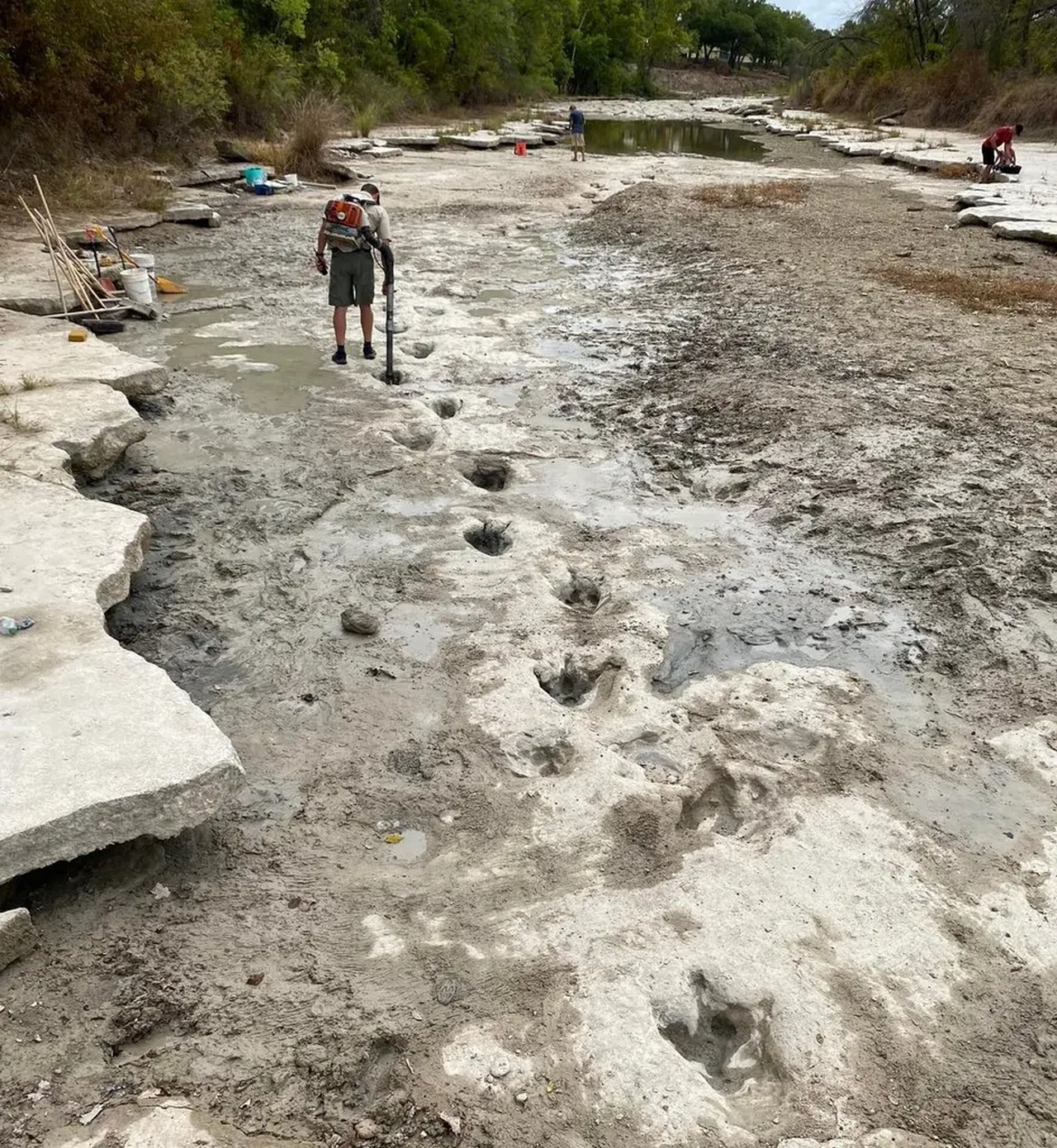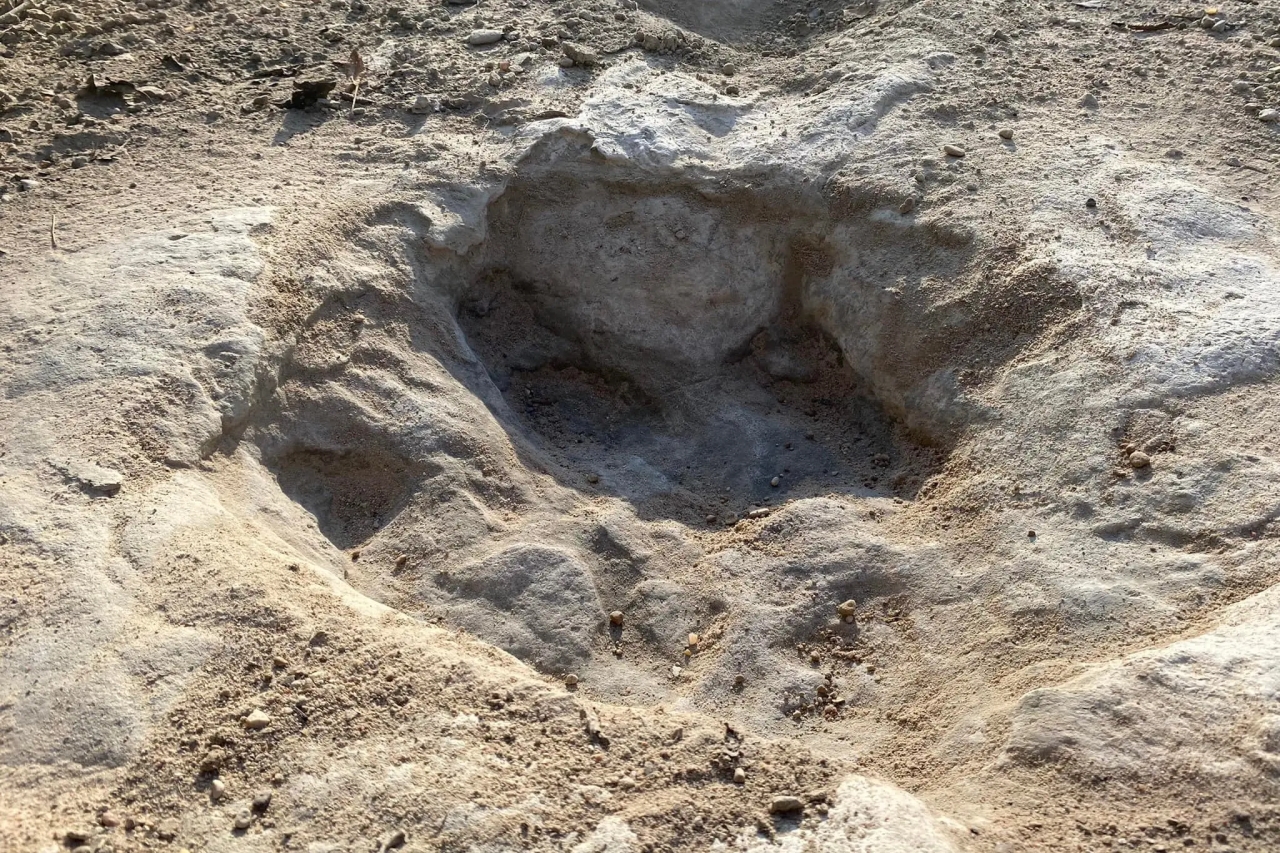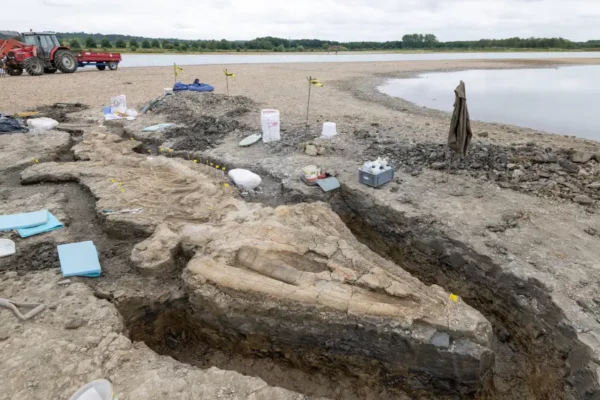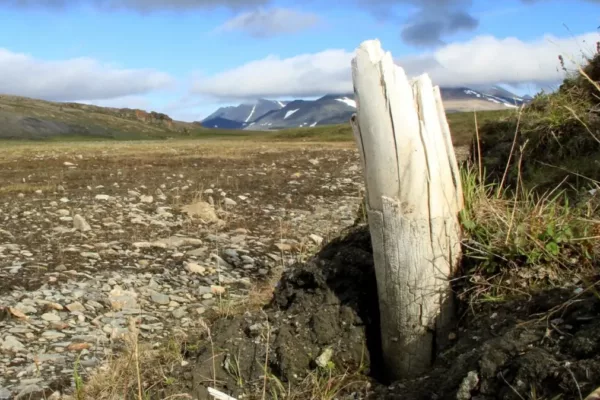Cemented in Time: Drought Uncovers Dinosaur Tracks in Dry Texas Riverbed
Paluxy River bed has preserved multiple footprints of an Acrocanthosaurus dinosaur dating over 100 million years
Droughts are no happy occasion as they grip the masses by their throats and suck the water resources dry. However, this year’s droughts have been revealing shards of history that were submerged in the water including World War II relics in Europe, an entire village in Spain, and several human remains in Las Vegas. Another strange and somewhat exciting thing has happened in Texas where a drought uncovered dinosaur tracks on the Paluxy River bed as water levels fell.
Reportedly, a severe drought at Dinosaur Valley State Park has revealed dinosaur footprints that were previously covered by the Paluxy River, dating back to around 113 million years ago. According to Stephanie Garcia, a spokeswoman for the Texas Parks and Wildlife Department, the tracks were discovered this month, and belong to Acrocanthosaurus, which are theropods or bipedal dinosaurs with three toes and claws on each limb.

Image: Dinosaur Valley State Park
This dinosaur would have stood at 15 feet tall and weighed about seven tons as an adult. As per researchers, the tracks were left in sediment which hardened into what is now limestone.
Garcia said;
Due to the excessive drought conditions this past summer, the river dried up completely in most locations, allowing for more tracks to be uncovered here in the park. Under normal river conditions, these newer tracks are under water and are commonly filled in with sediment, making them buried and not as visible. Tracks being buried under layers of sediment do help protect them from natural weathering and erosion.
Although the tracks will be buried under water after rains this week, the brief finding has excited researchers and the public. Other tracks in the park belong to a sauropod, or long-necked, small-headed dinosaur, called Sauroposeidon proteles.

Image: Dinosaur Valley State Park
Louis Jacobs, a vertebrate paleontologist and an emeritus professor of earth sciences at Southern Methodist University, said these prints indicate there might be more undiscovered tracks. He said that with river erosion, more tracks will be revealed but some will be erased as well.
Dinosaur footprints have been collected earlier from the Paluxy River in 1938 and are on exhibit at the American Museum of Natural History in New York City. Similar footprints were found in British Columbia and South America as well.
James Farlow, a vertebrae paleontologist and adjunct biology professor at Purdue University Fort Wayne said that the river and park have been a source of information on dinosaur behavior, but these discoveries rely heavily upon weather conditions to surface. He said;
Texas is blessed with a lot of good fossil occurrences, not only of dinosaur footprints but also of dinosaur skeletons as well. It’s a resource that is continually being destroyed but continuously being renewed.
While the discovery offered a momentary distraction from the extreme weather that Texas is facing, parts of the state have been witnessing intense droughts while others are experiencing flash floods, following ravaging fires and intense heatwaves amid a rapidly changing climate.
Via: New York Times


